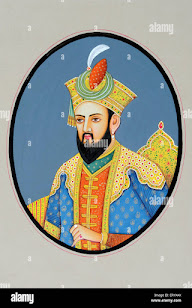Comparison between the rise of Mongloian and Mughal Empire.
The Mongolian and Mughal Empires were both powerful empires that had a significant impact on the history of the world. Although they existed at different times and in different regions, there are some similarities and differences between these two empires.
Similarities:
- Both empires were founded by powerful leaders who conquered vast territories through Military conquests. The Mongol Empire was founded by Genghis Khan, while the Mughal Empire was founded by Babur.
- Both empires were known for their military prowess and their ability to conquer and control vast territories.
- Both empires were multi-ethnic and multi-religious, with Mongolians and Mughals both ruling over diverse populations with varying religions and cultures.
- Both empires had a significant impact on the regions they ruled over, with the Mongol Empire establishing a powerful empire in Central Asia and the Middle East, and the Mughal Empire ruling over much of the Indian subcontinent and leaving a lasting cultural legacy.
Differences:
- The Mongol Empire was primarily a nomadic empire that relied on its military strength to conquer and control territories, while the Mughal Empire was a more settled empire that relied on a strong centralized government and bureaucracy to maintain control.
- The Mongol Empire was known for its brutal tactics and the destruction it caused in the regions it conquered, while the Mughal Empire was known for its more sophisticated cultural achievements, such as art, architecture, and literature.
- The Mongol Empire was primarily based in Central Asia and the Middle East, while the Mughal Empire was based in the Indian subcontinent.
- The Mongol Empire was a relatively short-lived empire that lasted from the 13th to the 14th century, while the Mughal Empire lasted from the 16th to the 19th century.
Another notable difference between the two empires was their religious affiliation. The Mongol Empire was primarily a pagan empire that allowed religious freedom for its subjects, while the Mughal Empire was a Muslim empire that ruled over a predominantly Hindu population.
- The Mongol Empire was known for its vast territorial conquests, which included parts of China, Russia, Central Asia, and the Middle East. In contrast, the Mughal Empire was primarily centered in the Indian subcontinent, with its rulers expanding their territory to include parts of present-day Afghanistan, Pakistan, and Bangladesh.
- The Mongol Empire was also known for its impact on world history, particularly in terms of its influence on trade and cultural exchange along the Silk Road. The Mughal Empire, on the other hand, is known for its contributions to the arts, literature, and architecture, particularly the construction of the Taj Mahal.
- In terms of their legacies, the Mongol Empire had a significant impact on the regions it conquered, both in terms of destruction and cultural exchange. The Mughal Empire, on the other hand, left a lasting cultural legacy in the Indian subcontinent, particularly in terms of the development of the Urdu language and the creation of a unique Indo-Islamic architectural style.
Conclusion
- while the Mongol and Mughal Empires had some similarities in terms of their military conquests and multi-ethnic societies, they also had significant differences in terms of their religious affiliations, tactics, regions of influence, and cultural achievements. Both empires, however, had a significant impact on the history of the world and their legacies continue to be felt to this day.




Comments
Post a Comment